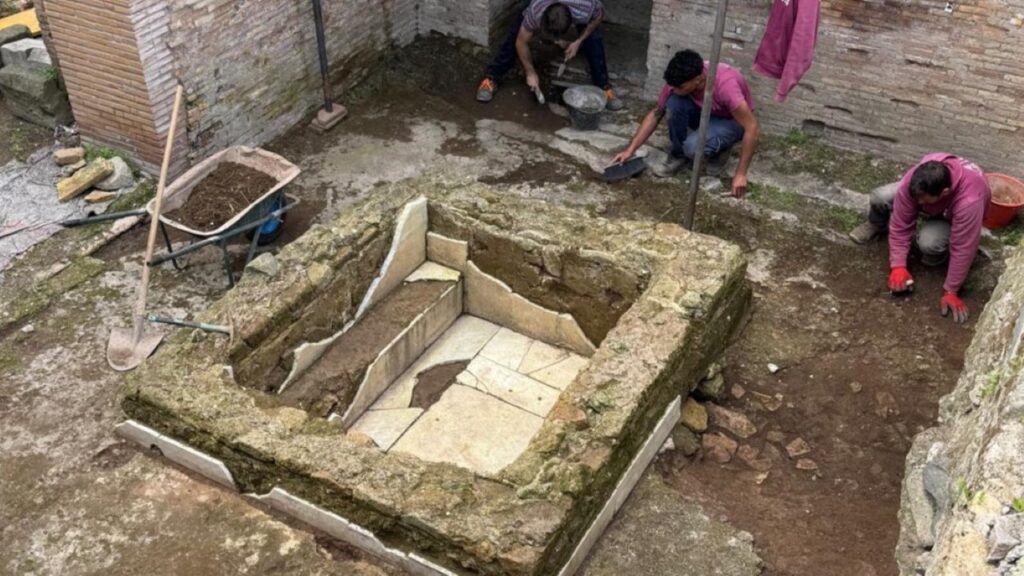In a remarkable development that intertwines archaeology and religious history, Italian archaeologists have made an intriguing discovery within the remnants of an Ancient Roman bath complex, highlighting the transformational journey of these structures from social hubs to places of early Christian significance. The site, known as the Triton Baths located within the Villa of Sette Bassi, became a focal point of this discovery, which has been celebrated through a recent announcement by the Appian Way Regional Park, an urban park that plays host to a plethora of historical artifacts and locations in Rome.
Dating back to the second century A.D., the Triton Baths encapsulate the essence of Roman public life where bathing, relaxation, and socializing were paramount. Not only did these baths serve the needs of common citizens, but they also were utilized by military personnel, positioning themselves as vital communal spaces. The complex was rich in amenities and often featured exercise facilities, heated rooms, and other luxuries akin to what we would now recognize as modern-day gyms. The park’s discovery sheds light on the evolution of such spaces, particularly their transformation into religious venues during Late Antiquity.
Delving deeper, historians found that what was once a bathing area underwent significant modification to cater to the requirements of early Christianity; it was transformed into a church. Among the most fascinating elements uncovered was a marble-lined basin, identified as an ancient baptistery. This aspect of the discovery is not only significant in a religious context but also signals a pivotal moment in the cultural and spiritual shift that Italy underwent as Christianity began its ascent in the Roman Empire.
Archaeologists meticulously studied the basin and established that it experienced two phases of renovation. The first alteration involved the creation of a deeper basin permitting full immersion, a crucial aspect of the baptismal rite prevalent among early Christian believers. Following this, a second renovation was implemented, raising the bottom of the basin, indicating adaptations to changing liturgical practices over time. These modifications emphasize the significance of baptism as an essential sacrament during this transformational period, where new believers established their faith through immersion—a ritual that symbolized purification and commitment.
The presence of this structure points to the likelihood of the site being a baptismal church complete with burial rights, contributing to a broader understanding of the Christianization process within the vicinity of Rome. The park’s statement conveyed the discovery’s importance, suggesting that scholars may soon glean insights into Late Antiquity in Rome—an era that witnessed profound religious transition. Such findings contribute to contextualizing the spatial dynamics of early Christianity and its integration into urban life.
In previous excavations, Appian Way Regional Park has consistently been a treasure trove of historical discoveries. Earlier this year, archaeologists uncovered the head of an ancient deity while excavating the Basilica of St. Stephen on Caelian Hill, a site boasting roots in the fifth century. The head’s accidental discovery, hidden within the church’s foundation, is posited to have been deliberately buried by early Christians seeking to renounce paganism—providing another layer to the narrative of cultural and religious transitions during this era.
Such archaeological endeavors highlight not only the historical depth of the Appia Antica territory but also the ways in which it continues to shape our understanding of cultural and artistic developments in late antiquity. As research progresses, the significance of these findings is anticipated to enrich the historical framework within which these artifacts are situated, offering invaluable elements for comprehending the nuanced cultural dynamics at play during a formative period in world history. The park’s optimistic declaration that “the studies are just beginning” speaks to the ongoing journey of exploration that continues to unveil the rich and intricate tapestry of Italy’s past.



